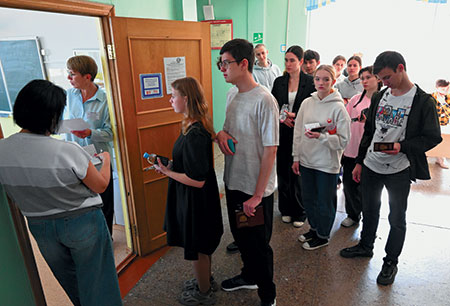
Recent analytical documents presented to Russian Minister of Education Sergei Kravtsov have unveiled a striking dichotomy within the nation’s schooling system, exposing significant disparities and long-term challenges. Compiling data from authoritative bodies including Rosstat, the Russian Presidential Academy of National Economy and Public Administration (RANEPA), and the Ministry of Education itself, these reports provide a decade-long retrospective on an educational landscape in constant flux. The findings raise critical questions about human capital development and national preparedness for future global economic demands.
One of the most remarkable statistics highlights a 28% surge in student numbers since 2014, with the cohort expanding from 14.1 million to over 18 million. Yet, during the same period, the number of teachers has remained static at 1.07 million. This imbalance has inevitably led to a substantial increase in workload for individual educators. The national average now sees 17 students per teacher, a notable jump from the 14:1 ratio observed in 1990. Reverting to the 1990 standard would necessitate the recruitment of over 220,000 additional pedagogues, a monumental task that underscores the acute pressure on the teaching profession.
This current strain stands in stark contrast to the demographic anxieties of the mid-2000s. In 2007, then-Education Minister Andrei Fursenko, now an aide to the President, repeatedly warned of an impending demographic decline, forecasting an 8% reduction in 11th-grade students by 2008 and a staggering 30% drop by 2010. His pronouncements, echoed in major news outlets, painted a picture of shrinking student pools and oversupplied higher education institutions. This era of “dying applicants” and a “demographic hole” nearly led to the abandonment of the Unified State Exam (USE or EGE), Russia’s standardized college entrance examination, as the pool of potential examinees dwindled.
However, a pivotal shift occurred with Federal Law No. 194, enacted in July 2007, which ostensibly protected children’s right to full general education but, in effect, mandated it. This legislative move, born from bureaucratic foresight, inadvertently expanded the pool of USE participants, effectively rescuing the exam from obsolescence. By making the single examination compulsory, officials inadvertently fueled a focus on superficial aspirations—such as easy money, prestigious status, and lucrative positions—among a student body that was, paradoxically, still shrinking.
Fast forward to 2019, and the demographic winds had completely reversed. President Vladimir Putin, speaking in Nizhny Novgorod, articulated an urgent need to “create a sufficient number of places in schools” to accommodate a burgeoning birth rate. The earlier fears of empty classrooms had given way to concerns about overcrowded facilities and the proliferation of second and even third shifts in schools. This dramatic demographic turnaround signaled a new era for Russian education planning.
This demographic pivot prompted further policy adjustments. In April 2025, the Ministry of Education and the Federal Service for Supervision in Education and Science (Rosobrnadzor) halved the number of mandatory exams for nine-grade graduates. While officially framed as a move to enhance the prestige of secondary vocational education, critics suggest the underlying motive was to free up classroom space in anticipation of future waves of new students, a pragmatic response to the latest demographic caprice.
Ironically, this initiative led to an unexpected surge in the perceived value of the USE. Schools now face queues of students aspiring to enter their tenth grade, and some administrations are reportedly implementing unofficial barriers for progression to senior levels, leveraging the Ministry of Education’s somewhat ambiguous stance. The Unified State Exam, once on the brink, appears secure for at least another two decades, shielded by the current demographic boom. This newfound stability is reportedly celebrated in the central offices of Rosobrnadzor and the Ministry of Education, where staff turnover has reportedly plummeted.
Yet, beneath these statistical triumphs lie deeper systemic issues. The education system, rather than fostering genuine learning, often finds itself locked in a perpetual battle against fluctuating demographics and the demands of endless diagnostic tests and monitoring. This focus on measurable outcomes risks eclipsing the fundamental process of education itself. As Mikhail Shneider, director of School No. 45, recently remarked, the core philosophy of renowned educator Simon Soloveychik—that “the process is more important than the result”—now profoundly contradicts current educational trends in Russia.
Indeed, the emphasis on the USE and similar administrative metrics has, arguably, stripped schools of their primary function: facilitating the learning process. The future workforce, often referred to as the “EGE children,” faces a world where robotics and automation are displacing entire professional strata. Russian youth, often lacking practical skills or a clear understanding of their interests due to an outcome-focused system, may find themselves particularly vulnerable. This predicament underscores the urgent need for innovative educational models, such as the proposed “park-school” concept. This approach advocates for practical skill application and adaptability, allowing students to explore and change specializations with ease—a crucial step toward cultivating the moral fortitude and practical competencies essential for navigating an unpredictable global landscape.
